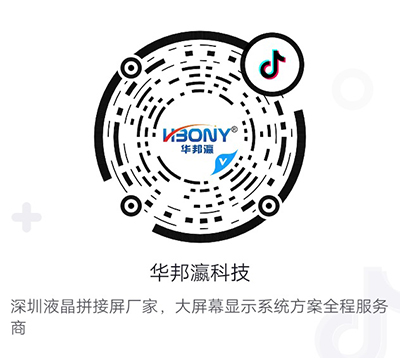-
- Solution
- Monitor
- Meeting
- Big Data
- Mall bar
- Stage stadium
- Creativity
 Solution
Solution -
 News
News -
- Service
- Service process
- After-sale service
 Service
Service -
- Video
- Company video
- Case video
.jpg) Video
Video




.jpg)
The latest, most popular and comprehensive intelligent business display product news information is presented for you
Release time:2020-08-07
In most cases, what customers care most about the performance parameters of LED display products is the display and performance parameters, such as the color, brightness, chip, power supply, refresh and other issues of the LED display. Very few people pay attention to the LED display. Knowledge of screen static electricity, in fact, the impact of static electricity in electronic products such as LED displays is still great, and sometimes it can be fatal, so it is still necessary to understand.
The LED display screen body will have static electricity during the production process. The occurrence of static electricity will cause harm to the production link of the LED display. Therefore, in order to avoid hidden harm, the LED display manufacturer must understand the source of static electricity and take precautions. If it doesn't happen, respond promptly after it appears.

Here we first introduce the source of static electricity on the led display:
The main sources of static electricity that affect the circuit are the human body, plastic products and related equipment and instruments. The static electricity from the environment of use includes objects and materials; floors, work tables and chairs; work clothes, packaging containers; painted or waxed surfaces, organic and Glass fiber materials; cement floors, painted or waxed floors, plastic floor tiles or floor leather; chemical fiber work clothes, non-conductive work shoes, clean cotton work clothes; plastics, boxes, boxes, bags, plates, foam pads.
The source of static electricity of led display screens may be generated in many details in the production process, such as: objects, materials, floors, work tables and chairs, work clothes, packaging containers, painted or waxed surfaces, organic and glass fiber materials, cement floors, paints Or waxed floor, plastic floor tiles or floor leather, chemical fiber work clothes, non-conductive work shoes, clean cotton work clothes, plastic, packing boxes, boxes, bags, trays, foam pads.
Electrostatic discharge failure: sudden failure and potential failure. In the use environment, the static failure above 90 is a potential failure, which is manifested as the weakening of the circuit's anti-electric overstress ability and shortening the service life.
The harm caused by static electricity in the LED display production process:
Ignoring anti-static in any link of led display production will cause the electronic equipment to malfunction or even damage it. When semiconductor devices are individually placed or incorporated into circuits, even if they are not powered on, static electricity may cause permanent damage to these devices. As we all know, LED is a semiconductor product. If the voltage between two or more pins of the LED exceeds the breakdown strength of the component medium, it will cause damage to the component. The thinner the oxide layer, the greater the sensitivity of LEDs and driver ICs to static electricity. For example, the lack of solder, the quality of the solder itself, etc., will cause serious leakage paths and cause devastating damage.
Another type of failure is caused when the temperature of the node exceeds the melting point of semiconductor silicon (1415°C). The pulse energy of static electricity can generate local heat generation, so there is a direct breakdown of the lamp and IC. This failure will occur even if the voltage is lower than the breakdown voltage of the medium. A typical example is that the LED is a diode composed of a PN junction, and the breakdown between the emitter and the base will reduce the current gain sharply. After the LED itself or the ICs in the drive circuit are affected by static electricity, functional damage may not occur immediately. These potentially damaged components usually show up during use, so the life of the LED product is affected. Is fatal.
Anti-static measures: conduct training on electrostatic knowledge and related technologies for personnel who use electrostatic sensitive circuits; establish an anti-static work area, use anti-static floor, anti-static workbench, anti-static grounding lead and anti-static appliances in this area, and The relative humidity should be controlled above 40; the damage caused by static electricity to electronic equipment may be released anywhere from the manufacturer to the field equipment. The hazard is caused by insufficient and effective training and malfunction of the equipment. LED is a device sensitive to static electricity. INGAN chips are generally considered the "first place" vulnerable to interference. And ALINGAPLEDSSHI "second place" or better; ESD damaged equipment can show dim, fuzzy, extinguished, short or low VF or VR. ESD damaged equipment should not be confused with electronic overload, such as: incorrect current design or drive, chip mounting, wire shielding grounding or packaging, or ordinary environmental induced pressure, etc.; ESD safety and control procedures: most The ESD of electronic and electro-optical companies is very similar, and has successfully implemented the ESD control, manipulation and main program of all equipment. These procedures have been used as instruments for testing quality effects because of the ancient ESD. ISO-9000 certification also lists him as a normal control procedure.
Transportation and packaging: In daily operations, ESD sensitive devices should always be stored in anti-static bags or containers. This includes inventory storage, shipping and WIP. Precautions during transportation include consumable fleets, boxes or other equipment, such as conductive wheels or drag links, and grounding when transporting ESD equipment; LED displays are currently the most widely used display products for large screens on the market, because It is a high-end display product, and the production cost is relatively high. LED display manufacturers need to train their employees on anti-static knowledge and control the relative humidity above 40 to minimize the damage rate of the LED display during transportation.
The LED display production process is a very rigorous and subtle process, and every link cannot be overlooked. The electrostatic protection of display screens is also an important part of the production of LED display screens. At present, people in the industry do not have a deep understanding of electrostatic protection, let alone meet the needs of professional LED electronic display production. More professionals need to continue to study, Discuss together. Mastering the anti-static knowledge of LED display screens will help improve the production efficiency of LED display screen products and reduce the occurrence of safety accidents.
2025-07-15 Huabangying Optoelectronics
2025-06-10 Huabangying Optoelectronics
2025-05-14 Huabangying Optoelectronics
2025-04-10 Huabangying Optoelectronics
2025-03-05 Huabangying Optoelectronics
2025-02-12 Huabangying Optoelectronics
Links:



